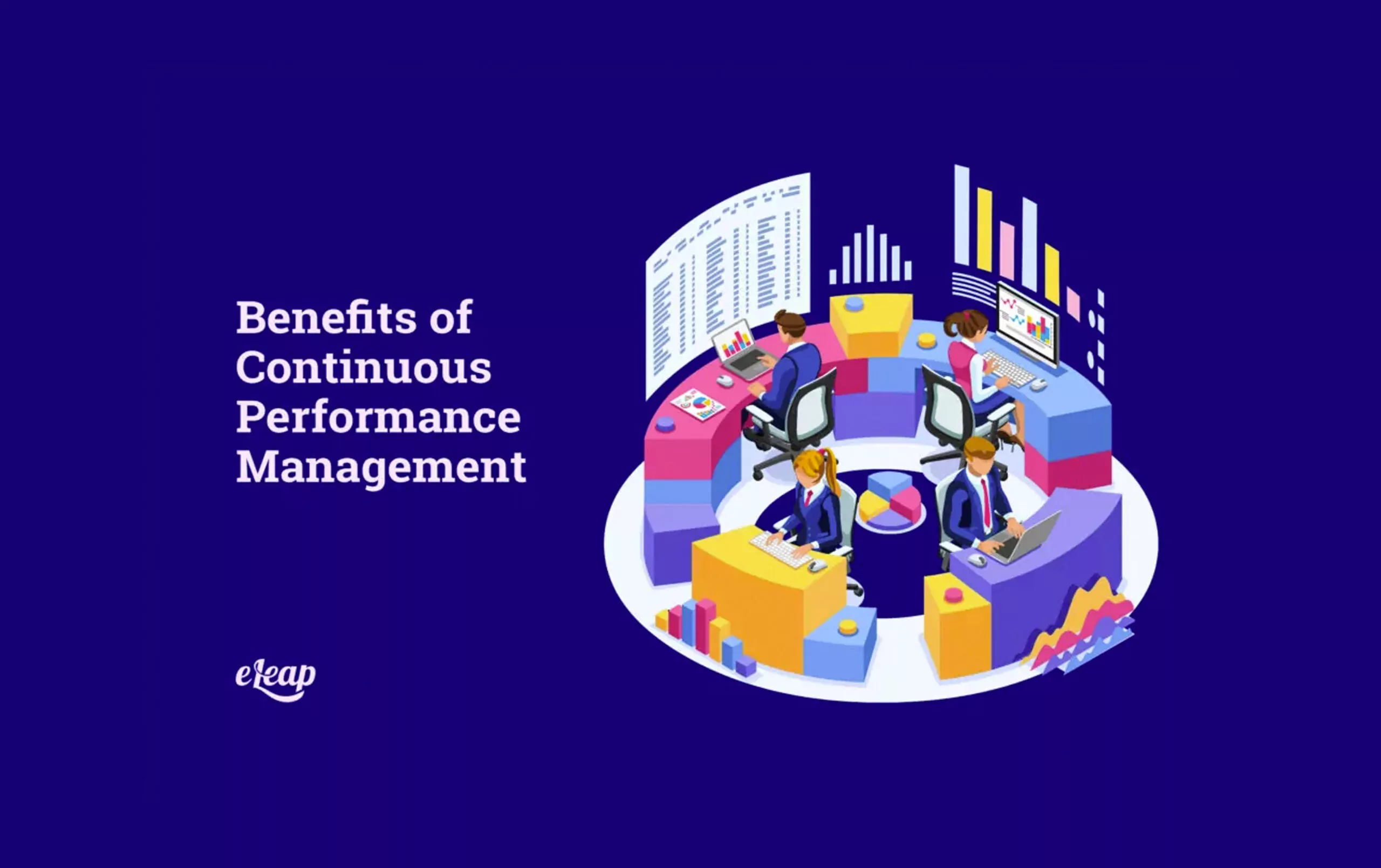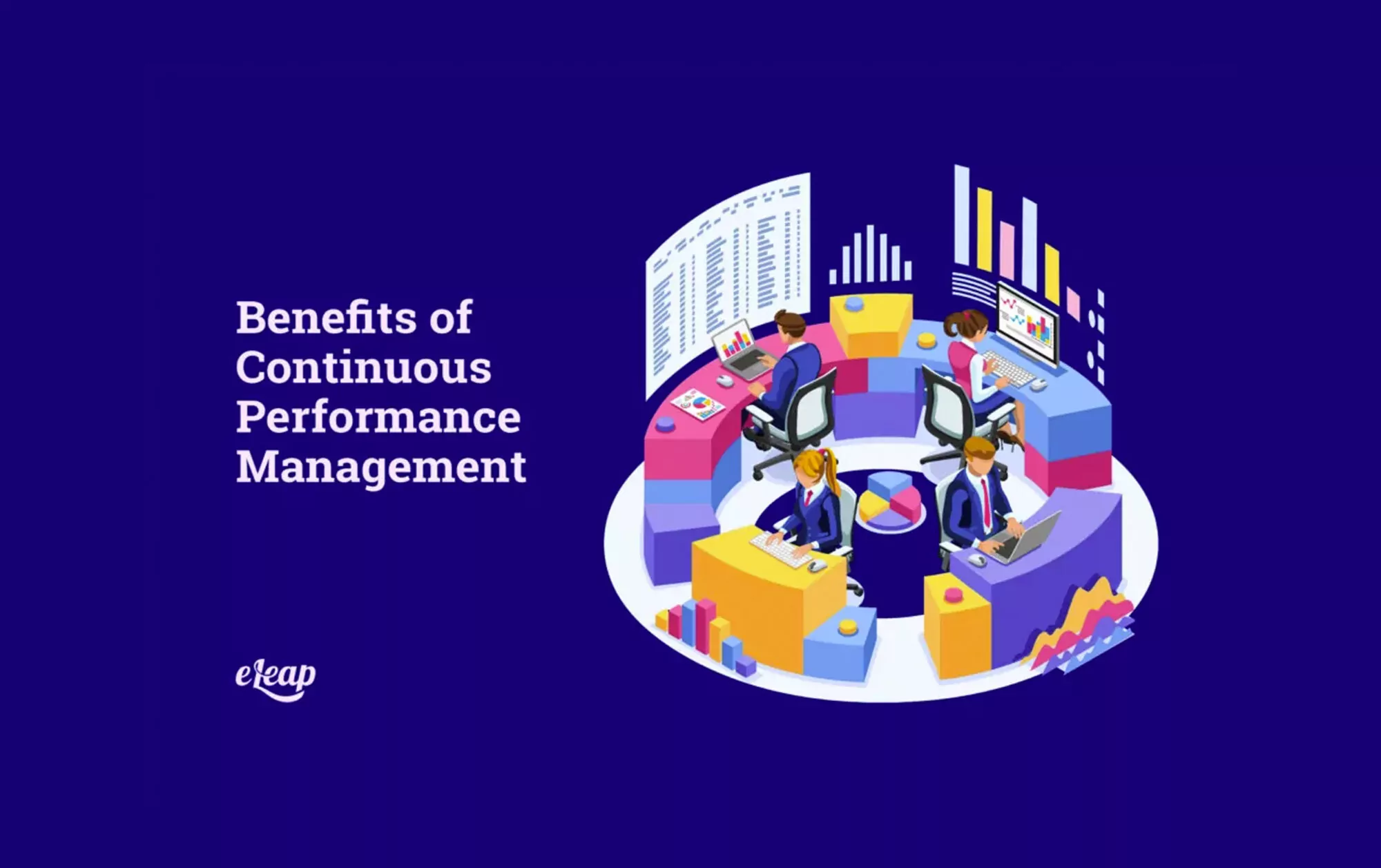Benefits of Continuous Performance Management

Performance management, in general, is a critical component of well-run organizations. But what many people don’t know is that there are actually different kinds of performance management. Generally speaking, performance management is an organizational process with the purpose of ensuring employees can deliver the highest quality of work to clients. Performance management can be divided into two approaches: a more traditional performance management system and continuous performance management. Explore how eLeaP’s Performance Management Platform can simplify evaluations, boost productivity, and drive measurable results.

What is Traditional Performance Management?
The most well-known type of performance management is the more conventional approach, which, until recently, was used the most often by a majority of organizations. Traditionally, performance reviews happen once a year when a manager summarizes each employee’s performance. However, annual reviews just aren’t the most effective way to manage employees anymore.
What is Continuous Performance Management?
An increasingly popular form of performance management is continuous performance management. While traditional performance management only includes on annual review, continuous performance management involves regular check-ins throughout the year, along with continuous feedback to help improve employee performance. Technology advancements and improvements in a general understanding of human motivation have led organizations to move away from the traditional performance review process and use continuous performance management to align with and motivate employees.
This style of performance management helps employees gain a clear understanding of how their work impacts company goals and priorities. This helps to improve employee performance over time. These days, keeping employee morale and motivation high is a key component of running a business, and as more organizations recognize this, there has been a shift in focus to a continuous performance management model, which consists of the following components:
- Regular check-ins and goal conversations
- More frequent reviews
- An increased emphasis on constructive feedback
- Learning and development plans
- Closer monitoring of improvements
- Recognition and appreciation that happens frequently and in real-time
So, continuous performance management is the way forward, but what exactly are the benefits of following such a model over a more conventional approach?
The Benefits of Continuous Performance Management
A More Engaging Work Environment
Management and leaders can far more easily interact with employees, as well as share and discuss work roles in a continuous performance management system. What’s more, it’s far simpler to identify shortcomings and nip any problems in the bud before they worsen. Providing employees with regular feedback on their performance enables them to improve, which allows them to feel as though they can grow within the company. The cycle of performance management is more effective when both sides can give and receive feedback continuously.
Frequent, Real-Time Recognition
The regular recognition of an employee’s performance will make them more productive and motivated. Keeping employee morale high requires regular feedback and reviews. When reviews are done with regularity, it’s also far easier to recognize employees for their accomplishments and hard work in real-time. Formal recognition of employee performance is made much easier by facilitation of a continuous performance management system.
Improved Employee Retention Rates
Managers can decide how best to reward employees by understanding what motivates them and formally honoring their efforts. As a result, employees will be more likely to stay with a company for the long term. Employees who feel unappreciated and poorly managed will eventually quit. Thus, companies that are successful in providing employee feedback with regularity have lower turnover rates. When feedback is regularly sought, employees can express opinions and issues freely through ongoing, fluid conversations with management. What’s more, it becomes part of the work culture, improving the quality of the conversations and becoming part of the company culture. Leaders can also easily track team performance and any issues that arise.
Drives Employee Engagement
Knowing how employees are performing helps in identifying if and where they need to improve. It also helps to narrow down the root of issues more easily, such as whether performance issues are related to skill gaps, the employees themselves, or a larger issue within the company. Once such issues have been identified, organizations are also better able to solve problems, such as by providing improved training if necessary. Alternatively, a company can hire new members of the team who have the necessary skills if the need arises. All in all, engaging employees has a multitude of benefits that are unparalleled. An employee and leader relationship built on continuous performance management provides for an ongoing cycle of improvement.
Facilitates Goals Setting
Goal setting is critical if you want your employees to improve their performance, and a continuous system can seriously help to facilitate goal setting. Even better, we live in a world where companies are steadily evolving, and as the organization’s business environment changes, the system adapts and evolves as well. Thus, goal setting is critical but can be difficult to achieve in an ever-changing environment if continuous performance management isn’t used.
Performance management systems help define an employee’s goals within the workplace, eliminating any ambiguity or confusion surrounding what exactly they’re trying to achieve. By establishing a clear understanding of your goals and expectations, employees are more likely to become involved in helping the organization reach its objectives. Ultimately, this assists the organization in attaining its own goals, so it’s a win-win for everyone.
One thing is for certain: The benefits of continuous performance management are worth the effort and commitment from your company. Gone are the days of the traditional dreaded annual performance review. Integrating continuous performance management into your company’s culture is a sure-fire way to improve the ways your employees perform. Remember, regular performance reviews can take the form of conversation and feedback reviews, in which employees are invited to answer open-ended questions about their performance, or affinity-based reviews, in which peer reviews are conducted with employees who are affiliated with other team members. And don’t forget, employees are more likely to be engaged in the continuous performance management process when there are weekly check-ins. With this system, leaders know about employee progress or issues they need to address regularly and in real-time, helping them bolster performance and overall improving the running of an organization.